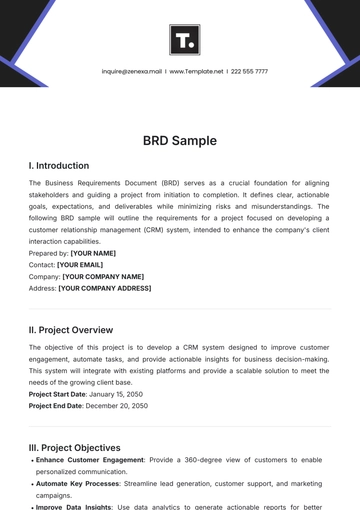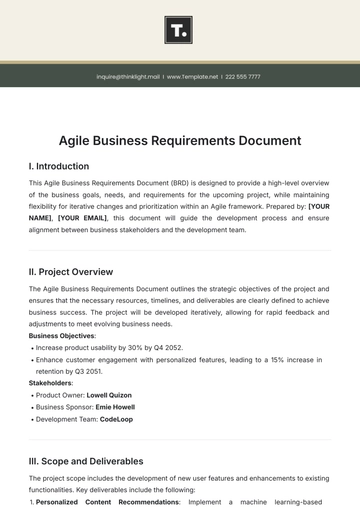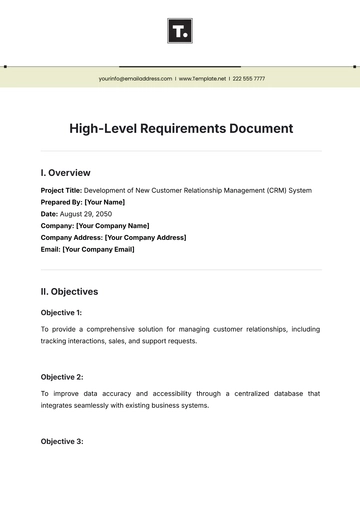Benefits Requirements
Prepared By: [YOUR NAME]
Date: [DATE]
I. Introduction
This document provides a detailed outline of the benefits that the proposed product, service, or system is expected to deliver. Its primary purpose is to articulate the anticipated advantages for both end-users and stakeholders, including enhancements in performance, reductions in costs, and other key improvements. The aim is to ensure that all expected gains are clearly defined and aligned with the project's objectives, enabling a comprehensive understanding of the value and impact of the proposed solution.
II. Scope
The scope of this document encompasses a thorough enumeration of the benefits anticipated from the project. It delineates the parameters within which these benefits are to be achieved, ensuring that they align with and support the overall project goals and objectives. This clarity of scope is essential for measuring the project's success and validating that the benefits realized meet the defined expectations and contribute effectively to the intended outcomes.
III. Benefits Description
A. Performance Improvements
This section details the enhancements in system performance expected from the project.
Benefit | Expected Outcome | Value |
|---|
Faster Processing | Reduction in processing time by 30% | Increased user productivity |
Higher Reliability | System uptime improved to 99.9% | Reduced downtime costs |
B. Cost Savings
This section addresses the financial benefits associated with the project.
Benefit | Expected Outcome | Value |
|---|
Reduction in Operational Costs | 20% decrease in maintenance expenses | Higher profit margins |
Energy Efficiency | 15% reduction in energy use | Lower utility bills |
C. Efficiency Gains
This section covers the improvements in workflow and operations efficiency.
Benefit | Expected Outcome | Value |
|---|
Streamlined Processes | 25% reduction in process cycle time | Improved operational throughput |
Automated Reporting | Eliminates manual data entry | Frees up employee time for strategic tasks |
IV. Criteria for Success
The metrics and standards for assessing the realization of the benefits:
V. Assumptions and Constraints
This section outlines any assumptions made during the benefits planning and any constraints that could impact the achievement of the stated benefits.
A. Assumptions
B. Constraints
Budget Limitations: The project must stay within its budget, which may restrict its scope, resources, and strategies, making effective budget management crucial.
VI. Stakeholders
The following individuals or groups are affected by or involved in the achievement of the benefits:
IT Department: Responsible for the technical implementation, maintenance, and support of the project, ensuring that system requirements and performance standards are met.
VII. Dependencies
This section lists any dependencies on other projects, systems, or resources needed to achieve the benefits:
Resource Allocation from the Finance Department: Timely and adequate resource allocation from the Finance Department is essential for managing budgets, controlling costs, and supporting project execution.
Requirements Templates @ Template.net






























